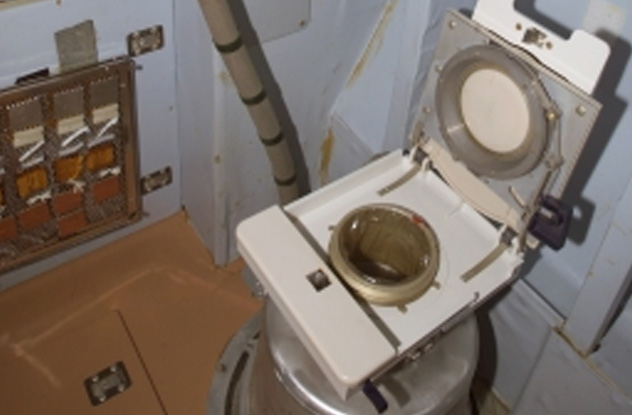 Music
Music  Music
Music  History
History 10 Less Than Jolly Events That Occurred on December 25
 Weird Stuff
Weird Stuff 10 Funny Ways That Researchers Overthink Christmas
 Politics
Politics 10 Political Scandals That Sent Crowds Into the Streets
 Weird Stuff
Weird Stuff Ten Bizarre Facts About The Doge Meme
 Our World
Our World 10 Ways Your Christmas Tree Is More Lit Than You Think
 Movies and TV
Movies and TV The 10 Coolest Stars to Set Sail on The Love Boat
 History
History 10 Things You Didn’t Know About the American National Anthem
 Technology
Technology Top 10 Everyday Tech Buzzwords That Hide a Darker Past
 Humans
Humans 10 Everyday Human Behaviors That Are Actually Survival Instincts
 Music
Music 10 Surprising Origin Stories of Your Favorite Holiday Songs
 History
History 10 Less Than Jolly Events That Occurred on December 25
 Weird Stuff
Weird Stuff 10 Funny Ways That Researchers Overthink Christmas
Who's Behind Listverse?

Jamie Frater
Head Editor
Jamie founded Listverse due to an insatiable desire to share fascinating, obscure, and bizarre facts. He has been a guest speaker on numerous national radio and television stations and is a five time published author.
More About Us Politics
Politics 10 Political Scandals That Sent Crowds Into the Streets
 Weird Stuff
Weird Stuff Ten Bizarre Facts About The Doge Meme
 Our World
Our World 10 Ways Your Christmas Tree Is More Lit Than You Think
 Movies and TV
Movies and TV The 10 Coolest Stars to Set Sail on The Love Boat
 History
History 10 Things You Didn’t Know About the American National Anthem
 Technology
Technology Top 10 Everyday Tech Buzzwords That Hide a Darker Past
 Humans
Humans 10 Everyday Human Behaviors That Are Actually Survival Instincts
10 Odd Ways Space Feels Just Like Home
We like to think of space as the final frontier, with everything new and exciting. But space is more like our home on Earth than most people realize—in good and bad ways.
10You Can Go Fishing
There are at least half a million pieces of debris orbiting Earth, some moving as fast as 28,000 kilometers (17,500 mi) per hour. When an object moves that quickly, it can damage space equipment or vehicles even if it’s only the size of a paint chip. Over 17,000 items of space junk are bigger than a coffee cup, which could have a disastrous impact with active missions. But collisions aren’t the only danger. Under certain conditions, propellant tanks and partially charged batteries from abandoned rockets and satellites may explode.
As a result, some governmental space agencies are going fishing with nets, a technology that’s been around since at least 8300 BC. “The main advantage of the net option, whether for e.Deorbit [a European Space Agency (ESA) mission to clean up space junk] or other debris removal missions in [the] future, is that it can handle a wide range of target shapes and rotation rates,” explained ESA engineer Kjetil Wormnes.
To prepare for its e.Deorbit mission in 2021, ESA scientists flew in an aircraft simulating short intervals of weightlessness, 21 times over two days, to test their ability to shoot a fishing net from a compressed-air ejector to catch a model satellite. Lightweight nets worked better than thicker nets. “The good news is, [the nets] worked extremely well—so much so that [they] usually had to be cut away with a knife before we could shoot again,” said Kjetil Wormnes.
The ESA also plans to test other ways to clean up space debris, including using a harpoon, an ion beam, and a robotic arm.
9‘To The Moon, Alice!’
On reruns of the old show The Honeymooners, whenever Ralph Kramden would get mad at his wife, he’d shake his fist and threaten, “To the Moon, Alice!” That’s as far as it went for him. But now you can actually blast your relatives into space and pretend it’s for scientific purposes.
In a real-life study of “the twin paradox,” NASA recently sent astronaut Scott Kelly to the International Space Station for one year while his identical twin, retired astronaut Mark Kelly, stayed on Earth. In a year, NASA will compare how the twins differ, potentially giving us the chance to see which health issues arise from space travel rather than genetics. (This falls short of Albert Einstein’s twin paradox, which says that the twin who goes into space will return to Earth younger than the one who stays home; the ISS isn’t traveling fast enough for that effect to take place.)
NASA will study 10 different ways that the human body is affected by a long-term space mission. For example, space travel should make Scott’s immune system weaker than Mark’s. By injecting both men with flu vaccine, NASA scientists want to see how their immune systems react to the serum. They’ll also look at the length of the men’s telomeres, the repeating DNA sequences at the end of chromosomes. If Scott’s telomeres are shorter, that may mean that radiation in space caused him to age prematurely. NASA will also evaluate changes in the men’s vision, cardiac activity, sleep patterns, and mental alertness.
The big weakness in this study is that it uses only one pair of twins. Anything NASA discovers could be an outlier. To be statistically significant, they need more sets of twins in the study. Also, retired astronaut Mark Kelly has previously gone on space missions, so his body may already be showing the effects of space.
8You Can Start Your Morning With Espresso
If you’re concerned that you can’t get going in the morning without a good cup of coffee, worry no more. Two Italian companies have designed the ISSpresso to overcome the lack of gravity in space. Normally, a coffeemaker shoots water onto ground coffee and then drips the hot liquid into a cup. But in space, the coffee droplets would simply float away. That could burn the astronauts and the equipment in the International Space Station or on a spacecraft. It’s especially dangerous with espresso, which uses water heated to 94 degrees Celsius (201 °F).
On Earth, the ISSpresso weighs a whopping 20 kilograms (44 lb), although that’s not a problem in a weightless environment. The extra weight comes from safety features, including the all-steel construction that tolerates high pressure. The water is pumped around the machine before flowing into a plastic pouch. In space, you have to drink your espresso with a straw, but the company promises that it tastes as good as what they make on Earth. The machine can produce espresso, black coffee, tea, and broths.
7Going Up?
If you don’t like the idea of rocketing into space, NASA, Europe, Japan, Russia, and others are trying to develop a space elevator.
The obstacle right now is how to extend a cable or ribbon 35,400 kilometers (22,000 mi) that’s strong enough yet light enough to lift people and payloads from Earth to space. Scientists from Penn State University recently figured out how to make an ultra-thin “diamond nanothread” that seems to have some of the characteristics we need. “One of our wildest dreams for the nanomaterials we are developing is that they could be used to make the super-strong, lightweight cables that would make possible the construction of a space elevator which so far has existed only as a science-fiction idea,” said Penn State professor John Badding. But they can’t make it in the right size yet.
Until then, you might look into taking a giant balloon to the edge of space as early as 2016. In February 2015, World View successfully tested the flight of a balloon secured to a parafoil, which is like a big parachute. It sailed higher than has ever been done before. “The accomplishments of this flight further our two main objectives of manned spaceflight and advancing research,” said Taber MacCallum, World View’s chief technology officer. “The successful flight of the parafoil at this altitude brings us closer to flying private citizens safely to the edge of space and also allows us to continue our research and education program by providing safe access to the near-space environment.” The ride will cost you $75,000.
6You’ll Need Your Pooper Scooper

Normally, human waste is stored on a spacecraft until it’s burned in space cargo vehicles during reentry into Earth’s atmosphere. But if astronauts stay on an asteroid or a planet for a long mission, the accumulated waste could weigh quite a bit when returning home. Leaving it on the surface of an asteroid or planet is not a desirable option. A related problem is carrying the weight of all the fuel needed for the return trip when astronauts blast off from Earth.
Scientists began to think about how to convert human waste into fuel. If they could do that successfully, they would solve two problems at once. First, spacecraft wouldn’t need to carry as much fuel when leaving Earth because space poop would provide at least some of the fuel to get home. Second, by converting waste into fuel, they wouldn’t need to carry the extra weight of feces on the return trip to Earth.
NASA turned to University of Florida researchers to tackle this problem back when they were planning to establish a Moon station. The Florida scientists created an anaerobic digester process to break down food packaging, human waste, and uneaten food into methane for fuel. The process would destroy any pathogens in the waste products.
Researchers calculated that each crew would produce 290 liters (77 gal) of methane per day. Carbon dioxide and about 800 liters (200 gal) per year of undrinkable water would also be created. But the water could be further reduced to hydrogen and oxygen. The oxygen could then be used for life support, while the carbon dioxide and hydrogen could be transformed into methane and water. Eventually, we may be able to use this fuel conversion process on Earth, too.
5You Can Surf The Net And Post On Social Media
Right now, there are regions on Earth that don’t have Internet access. So it may seem impossible to expect to surf the Internet in space, especially if you go to Mars. But that may be changing.
Elon Musk, founder of SpaceX, recently announced an ambitious project that would redesign how we connect to the Internet. He wants to string a huge series of communication satellites orbiting about 1,200 kilometers (750 mi) over Earth rather than the usual 35,000 kilometers (22,000 mi) above that they do now. This would speed up Internet service far beyond that of fiber optic networks because signals would travel at the speed of light, bouncing off only a few satellites before reaching their destination. Right now, data packets have to wade through dozens of data centers before they get to you. This should also make Internet service available in areas that are typically inaccessible or have small populations.
Musk envisions his new satellite system as providing the basis for bringing the Internet to space, including Mars. “It will be important for Mars to have a global communications network as well,” said Musk. “I think this needs to be done, and I don’t see anyone else doing it.”
In the meantime, we can take our cues from astronauts like Chris Hadfield and Samantha Cristoforetti who make liberal use of social media when they’re in space. Hadfield is known for his videos on YouTube, especially his above rendition of David Bowie’s “Space Oddity,” as well as his tweets from space (such as a volley with actor William Shatner, who played Captain Kirk on the original Star Trek). Cristoforetti isn’t far behind in social media mastery. She tweets a new picture of Earth every night from the International Space Station. She also posted an exercise video. Not to be outdone by Hadfield, she’s been seen in a Star Trek uniform taking delivery of her ISSpresso on the space station.
4You Have To Stay In Your Own Lane

NASA’s Martin Lo began mapping the Interplanetary Superhighway in the early 2000s. A virtual map that plots passageways and tunnels through our solar system, the superhighway shows the best routes for spacecraft to take to save fuel. Usually, missions do flybys of planets or moons, taking advantage of their gravity like a slingshot to propel the spacecraft farther into space. But the interplanetary superhighway goes a step further by exploiting the way gravitational forces of different objects interact with each other in space. Not only does gravity from a planet pull on a spacecraft—the Sun pulls on the planets and the planets on their moons. In some places, these forces neutralize or balance each other, creating paths where a spacecraft can travel with minimal fuel.
For each planet and moon, there are five of these places, called Lagrange points. Lo plotted the corridors among these points to make space travel more efficient. Eventually, we may be able to build platforms or permanent outposts along the superhighway that can provide supplies and repair services to traveling spacecraft.
3When You Need More Than A Hug

Space is not only physically demanding for astronauts—it can be mentally challenging, too. We’ve already talked about potential drinking problems among astronauts, as well as psychological issues, such as when the Skylab 4 astronauts got impatient with ground control and turned off their radio contact with NASA for an entire day. But what happens if someone has a serious breakdown in space, maybe becoming suicidal or even homicidal?
NASA has written procedures for how to deal with mentally unstable astronauts, including if they try to destroy the crew’s oxygen or even open the hatch to kill everyone. NASA instructs the crewmates to first wrap the unstable astronaut’s ankles and wrists with duct tape. Then they should use a bungee cord to tie the person down. Finally, they can shoot that person with tranquilizers if they need to calm him or her down. “Talk with the patient while you are restraining him,” the instructions say. “Explain what you are doing, and that you are using a restraint to ensure that he is safe.”
After that, NASA and the flight commander will determine what other actions to take on a case-by-case basis. In the most extreme cases, they may abort the mission and go home. At the space station, they would just send their disturbed crewmate home on the next flight out. NASA doesn’t keep guns in space because a bullet could puncture the space station or spacecraft, resulting in everyone’s deaths. As of the time these instructions were written, there were no stun guns or other weapons onboard, either.
2You Can Have The Drama Of Reality TV
By 2025, the Mars One project wants to put four colonists on Mars for the rest of their lives (probably because there’s no way to bring them home), assuming they don’t die during the trip there. As part of the funding for the project, the survivors are supposed to be the stars of a reality TV show beamed to Earth. Additional colonists are expected to join the first group as future launches become feasible.
Dreamed up by Dutch entrepreneur Bas Lansdorp, Mars One recently announced that they’d narrowed the candidates to 100 people from the over 200,000 who originally applied. For the selection process, Norbert Kraft of Mars One conducted online interviews with each candidate to assess his or her motivation, team spirit, and knowledge of the risks. Robotic missions were to go to Mars first to set up the habitat modules for the settlement.
If the first colonists survive the trip, an MIT study shows that they’ll probably die within three months of landing on Mars when they run out of food, oxygen, or spare parts. Some of the technologies they need just don’t exist yet. Canadian astronaut Chris Hadfield is publicly advising the candidates to ask serious questions about the technical details now. “How does a space suit on Mars work? Show me how it is pressurized, and how it is cooled. What’s the glove design?” he asked. “None of that stuff can be bought off the rack. It does not exist. You can’t just go to SpaceMart and buy those things.”
Other troubling details have surfaced. For example, the companies that were working on the robotic missions are no longer under contract with Mars One. Darlow Smithson Productions (DSP) has said they couldn’t agree with Mars One on details of the reality show production and are no longer involved. Lansdorp confirms the DSP position on his webpage, which refutes criticism of the Mars One project. According to Lansdorp, the screening process for candidates will become more rigorous now. He has a new production company for the reality TV show, although no broadcast deal yet. Lansdorp also defends his $6 billion budget and explains that investments will provide the primary funding. Whatever happens, there’s sure to be a lot of drama, with or without a reality TV show.
1You Have To Watch Your Back

Around 1959, NASA engineers were having trouble designing a space capsule that was light enough to launch. Some people thought that women astronauts might solve the problem because they weighed less than men. In World War II, medical testing on Women Airforce Service Pilots (WASPs) also showed that they were able to tolerate cold, heat, loneliness, monotony, and pain better than men. That spurred Dr. William Lovelace II, who tested male astronauts for NASA, and Air Force Brigadier General Donald Flickinger to research women’s ability to become astronauts.
Jerrie Cobb, an accomplished pilot, was the first woman asked to join the program. Jackie Cochran, a famous WASP, then agreed to fund the testing of 19 more women pilots at the Lovelace foundation when NASA declined. Cochran wanted to be the first woman in space, but she was too old. Nevertheless, she seemed like a natural champion for the women’s training because she had argued fiercely for equal rights for WASPs during World War II.
Eventually, 13 of the 20 women in the program, the “Mercury 13,” passed the grueling physical examinations that were used by NASA to select astronauts. In many cases, they did better than the men. As they were getting ready to go to the Naval School of Aviation Medicine in Florida for more advanced testing, they received telegrams canceling the program. As the women desperately tried to get the program restarted, a Congressional subcommittee hearing was convened.
Although NASA officially argued that the women weren’t military pilots, which wasn’t an option for women in those days, the hearing degenerated into sexist jokes and comments by the men. But the betrayal by Jackie Cochran was unexpected. She testified that we didn’t need women astronauts because we had enough qualified men to do the job. “You are going to have to, of necessity, waste a great deal of money when you take a large group of women in, because you lose them through marriage,” said Cochran. “Even if we are second in getting a woman into the new environment, it’s better than to take a chance on having women fall flat on their faces.”
Although the Mercury 13 were not permitted into the space program, Valentina Tereshkova, a Soviet cosmonaut, was the first woman in space a year later in 1963.








